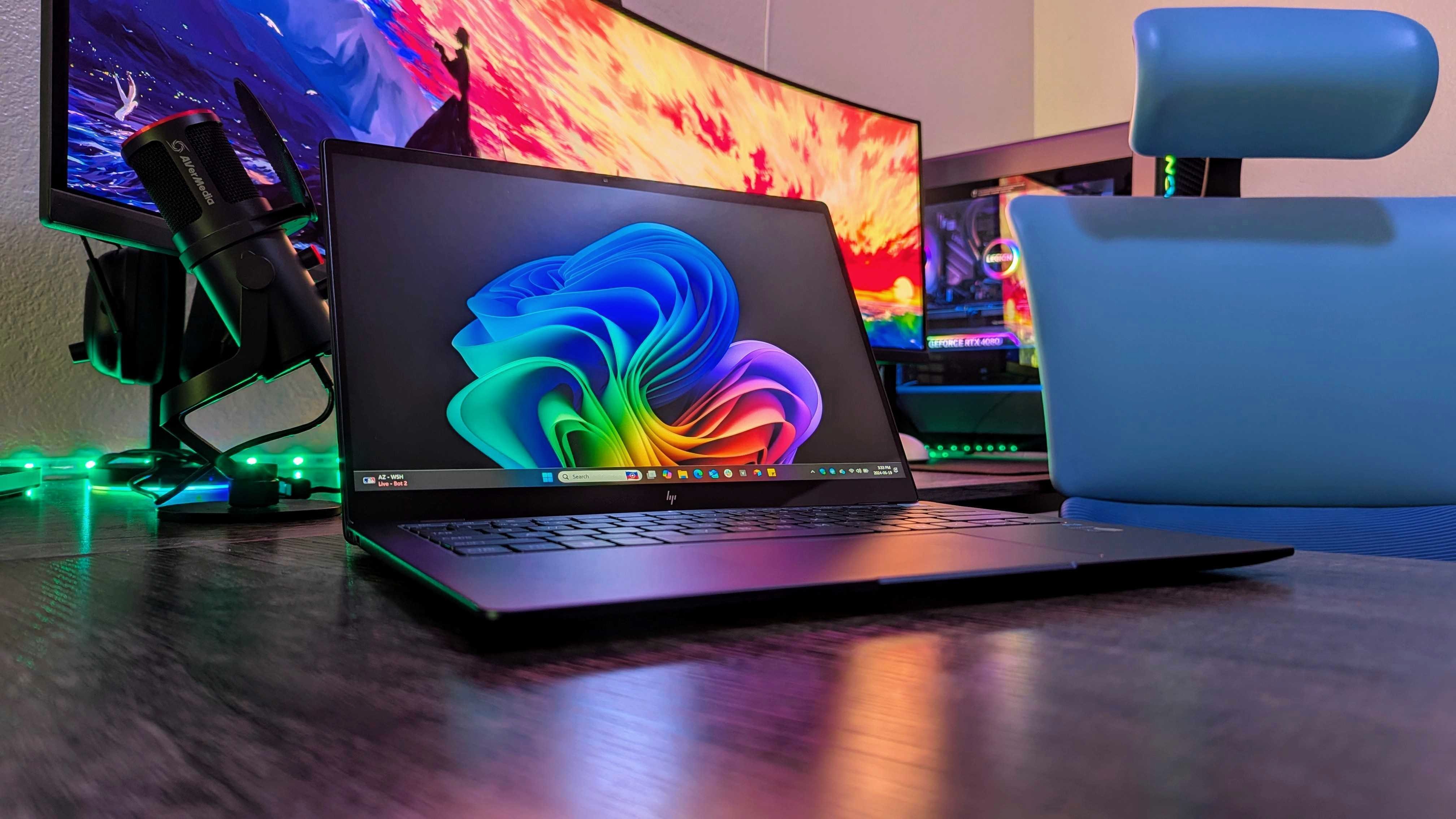
A new generation of Windows laptops is upon us, riding on the back of a wave of new ARM-powered PCs from various companies. HP is among the initial groups leading the "ARM revolution," and the EliteBook Ultra G1q is among the very first enterprise-focused laptops with Qualcomm's new hardware inside. It's still too early to deliver my full thoughts on this laptop, but I have been using it all day and wanted to give you my initial impressions.
The HP EliteBook Ultra G1q embraces HP's new design language that arrives as a part of the company's complete consumer rebranding, and its accented, dark blue colorway perfectly compliments the sleek and smooth aluminum chassis. This is an attractive device, but what impressed me most was the responsiveness and performance when setting it up. It seems the Snapdragon X series of systems-on-chip (SoCs) will be amazing, if this first generation is anything to go by.
HP EliteBook Ultra G1q: Pricing and specifications
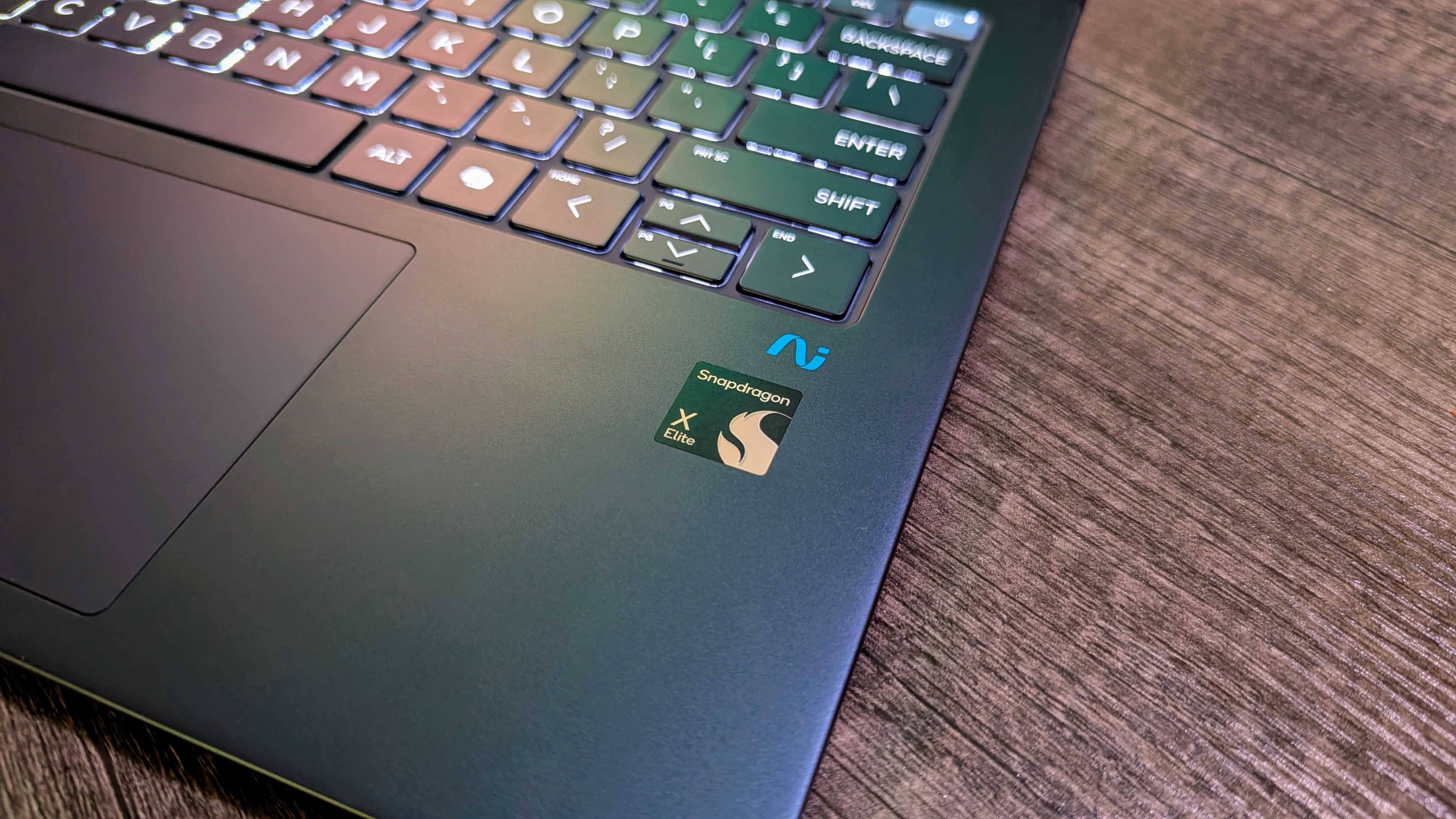
Pricing highlights
- The HP EliteBook Ultra G1q starts from $1,699.99 at HP, which is more expensive than other similarly equipped Copilot+ PCs.
- Additional security and remote management features like Windows 11 Pro, HP's Wolf Pro Security, extended 3-year warranty, MIL-SPEC durability testing, and Secured-Core are added costs.
- Non-enterprise users who don't need those features can get the very similar and much more affordable HP OmniBook X 14.
• Price: From $1,699.99 at HP
• Processor: Qualcomm Snapdragon X Elite X1E-78 (12 cores)
• GPU: Qualcomm Adreno (integrated)
• NPU: Qualcomm Hexagon (45 TOPS)
• RAM: 16GB LPDDR5x @ 8,400MHz
• Memory: 512GB M.2 NVMe PCIe Gen 4x4 SSD
• Display: 14-inch White LED, 16:10 aspect ratio, 2.2K (2,240 x 1,400) resolution, 300nits max brightness, touch enabled, Low Blue Light, 100% sRGB color gamut
• Webcam: QHD 5MP w/ IR sensor, Windows Studios & Poly Camera Pro support
• Audio: Dual-array microphones, dual stereo speakers w/ Poly Studio tuning
• Wireless: Up to Qualcomm Fast Connect 6900 Wi-Fi 6E, Bluetooth 5.2
• Ports: 1x USB Type-C 4.0 w/ Power Delivery & DisplayPort 1.4a, 1x USB Type-C 3.2 Gen 2 w/ Power Delivery & DisplayPort 1.4a, 1x USB Type-A 3.2 Gen 2 w/ HP Charging, 1x 3.5mm audio jack
• Battery: 59Whr, 65W USB Type-C fast charger
• Dimensions: 312.9 x 223.5 x 14.4-8.5mm (12.32 x 8.8 x 0.56-0.33in)
• Weight: 1.34kg (2.97lbs)
The first wave of Windows Copilot+ PCs has landed on the more affordable side of the spectrum, except for the HP EliteBook Ultra G1q. This 14-inch Ultrabook doesn't land in the same price range solely because it's aimed at businesses and enterprise users. This category of devices boasts additional security and remote management features not typically found in the consumer-grade laptops most people use, and that almost always results in a dramatically higher price tag.
As such, the HP EliteBook Ultra G1q starts at $1,699.99 at HP with a Qualcomm Snapdragon X Elite, 16GB of LPDDR5x RAM, 512GB of SSD storage, and a 2.2K touch display. Further down the line, HP will offer a higher-end configuration with Wi-Fi 7 and Bluetooth 5.4 instead of Wi-Fi 6E and Bluetooth 5.2, as well as up to 1TB of SSD storage, but that's not available yet at the time of writing.
What sets the EliteBook Ultra G1q apart from other Copilot+ PCs is the inclusion of Windows 11 Pro (usually an additional $100 on its own), which includes a bevy of enterprise-focused security and remote management features. On top of that, HP's Wolf Pro Security platform is here for added protection, and this is a Secured-Core PC for another layer of hardware security.
Finally, this version (versus the OmniBook) has a 3-year warranty (instead of one) and meets the 19 criteria for MIL-STD 810H durability.
Suppose you don't need any of those features. In that case, you may consider the HP OmniBook X 14 instead of the EliteBook Ultra G1q, as it boasts similar hardware and design but saves you a ton of cash in exchange for dropping those enterprise features.
HP EliteBook Ultra G1q: Design and build quality
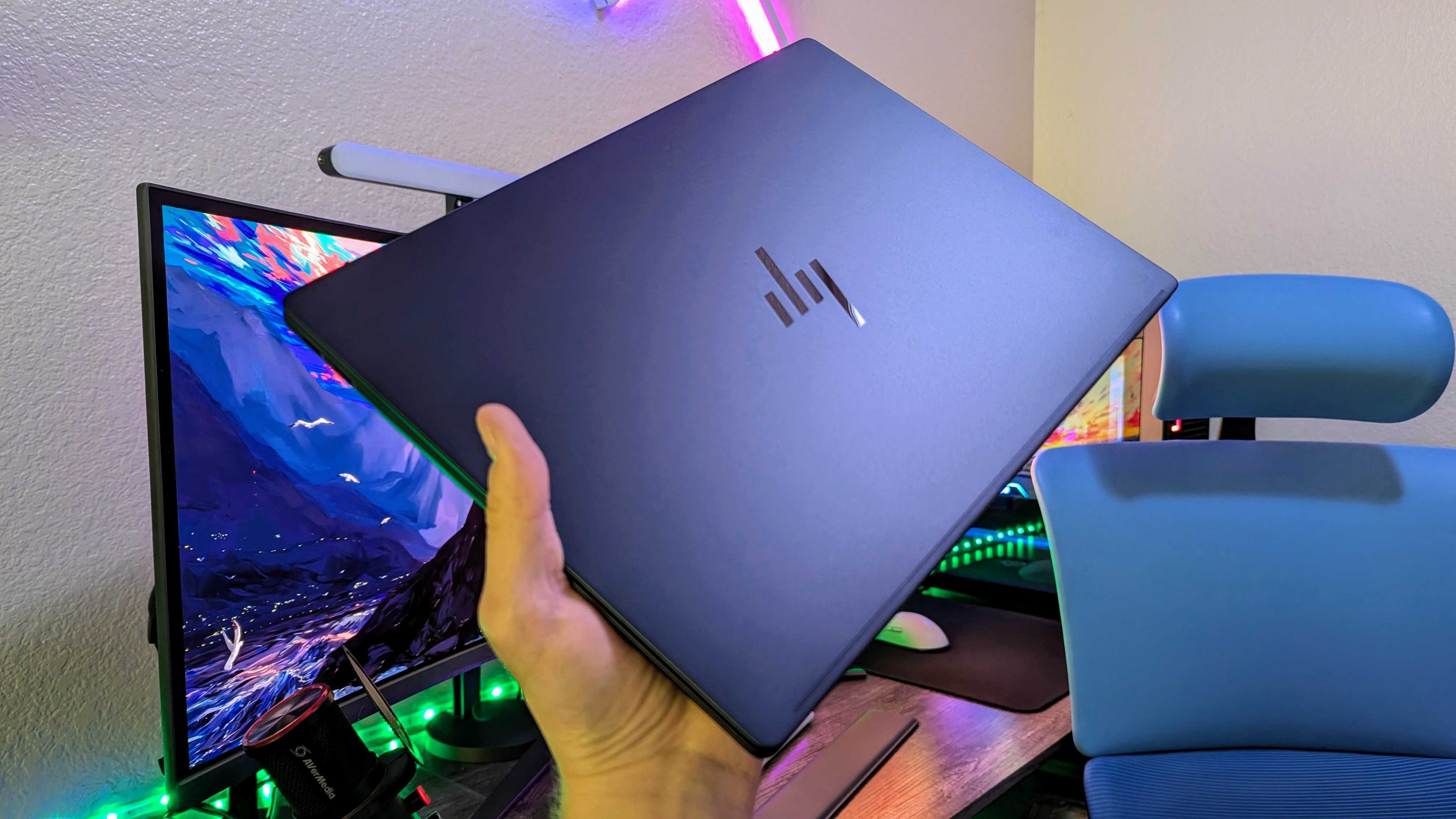
Design highlights
- The EliteBook Ultra G1q follows HP's newly refreshed design language, which features slim aluminum chassis with rounded edges and subtle accent colors.
- It looks and feels like a premium laptop, and the dark blue color is very fetching in person.
- The laptop is very thin and light, but it is a little light on ports; fortunately, USB4 is here to pick up some of the slack.

• ASUS VivoBook S 15 review
• Best Windows on ARM laptops
• Best Copilot+ AI PCs
• Windows on ARM FAQ
• Windows 11 apps run on ARM
• I'm obsessed with ARM laptops
You only have to look at the critically acclaimed HP Spectre x360 14 (2024) to know that HP can make a well-built, attractive, aluminum-clad laptop. However, the EliteBook Ultra G1q is an evolution of HP's design language, trading all the sharp edges of the company's previous efforts for soft curves. The result is a slim (14.4mm at its thickest) and relatively light (2.97 lbs) all-metal laptop that looks sleek from every angle.
Frankly, I'm a massive fan of this design. The EliteBook Ultra G1q is a traditional clamshell affair. Still, the combination of the rounded chassis, this gorgeous dark blue colorway, and HP's new subtle blue accents make for a very attractive device. The touch display is flanked on either side by thin bezels, but the top makes way for the 5MP IR webcam, and the bottom houses the always-present HP logo, so there are laptops that impress more on the display front here.
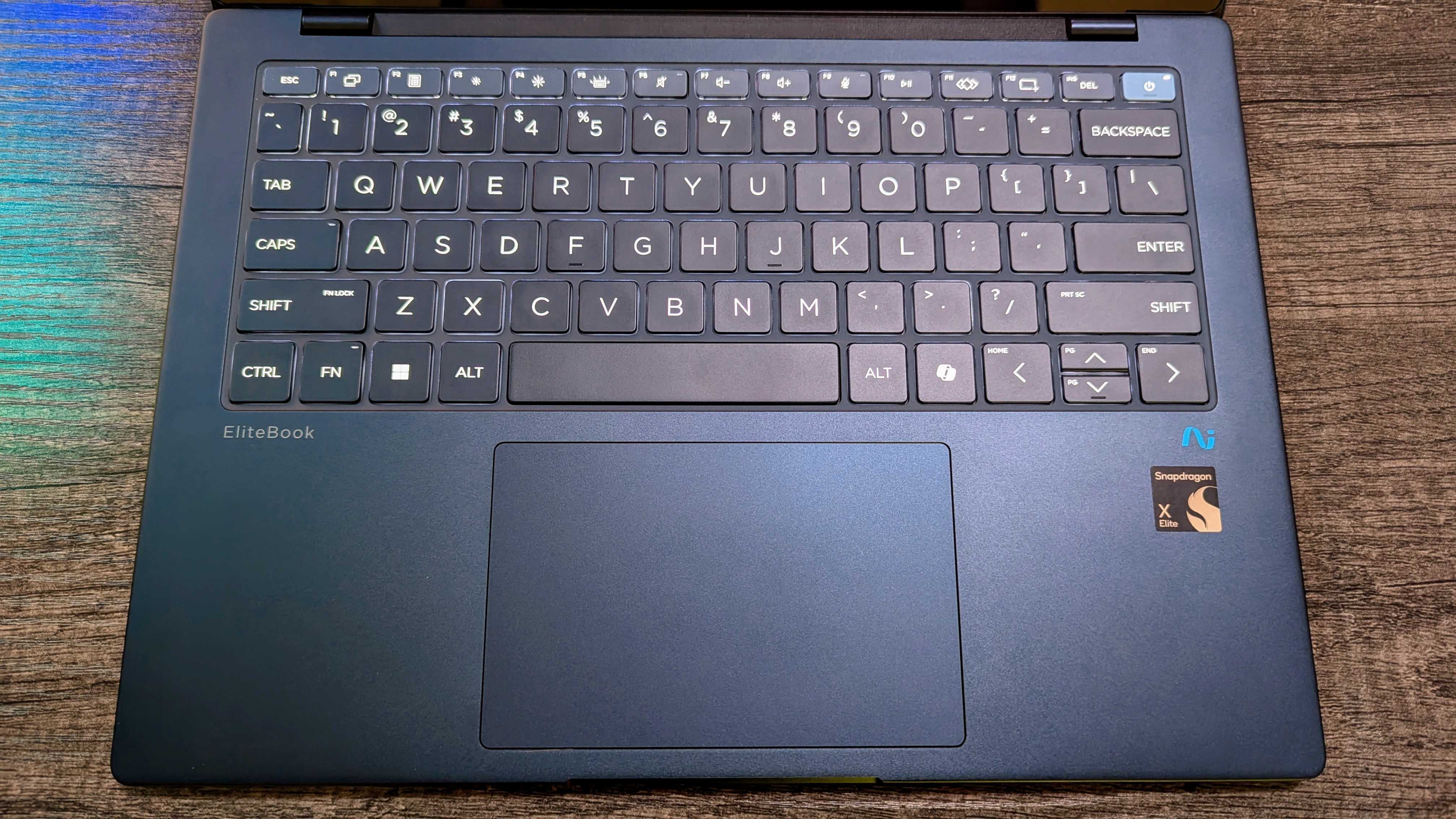
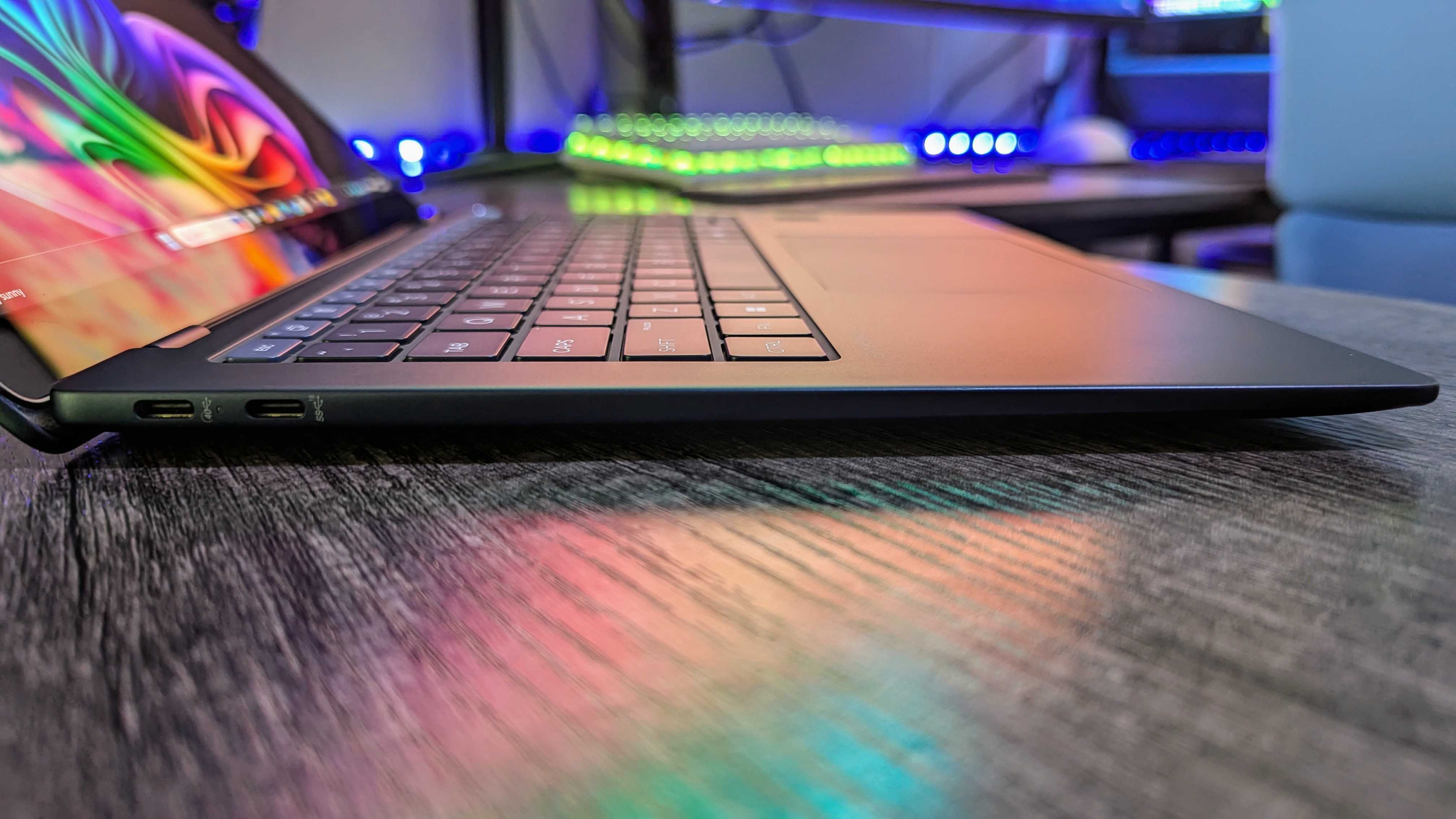
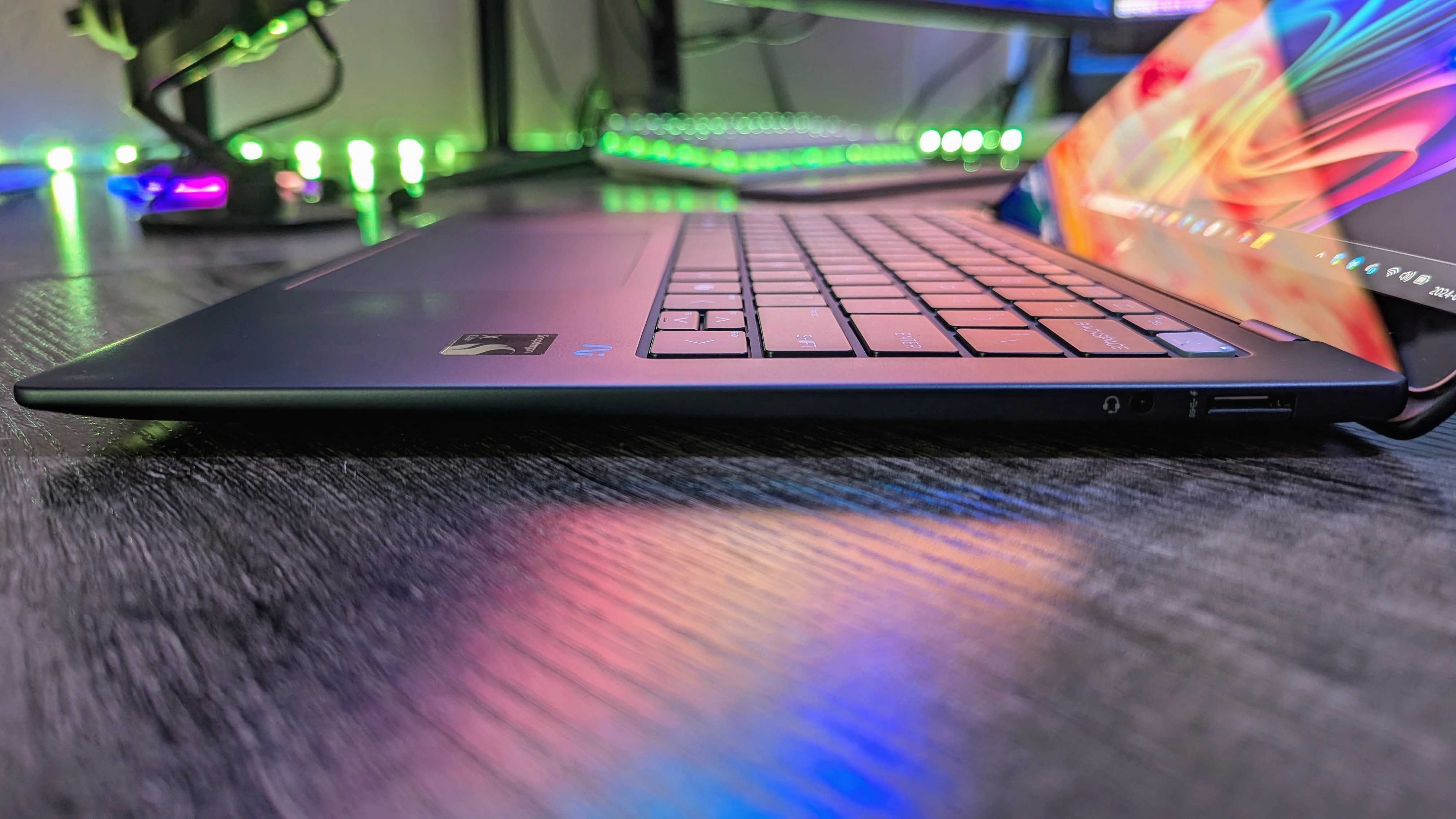
In general, though, the EliteBook Ultra G1q is clean. The keyboard is excellent — the layout is comfortable and spacious, and the typing response is tactile and immediate. The touchpad may not be a haptic touchpad. Still, it's large, the glass surface is effortlessly smooth, the button action is tight and satisfying, and it uses Microsoft Precision drivers for excellent gesture support. There is some noticeable flex in the center of the keyboard deck, though, which may annoy some users, and I've had a few instances of the touchpad not registering scrolling as responsively as I expected.
There also aren't a ton of ports here, but there's enough to get the job done. You have a USB4 Type-C port (yes, it can use Thunderbolt 4 accessories) and a USB Type-C 3.2 Gen 2 port on the right edge, supporting Power Delivery for fast charging and DisplayPort output. You get a 3.5mm audio jack on the right edge, but the most surprising addition is the USB Type-A port. Despite this laptop's thinness, HP still squeezed in a legacy port using a dropjaw port design. I don't love dropjaw ports, but it's still better than not having that port.
HP EliteBook Ultra G1q: Display quality
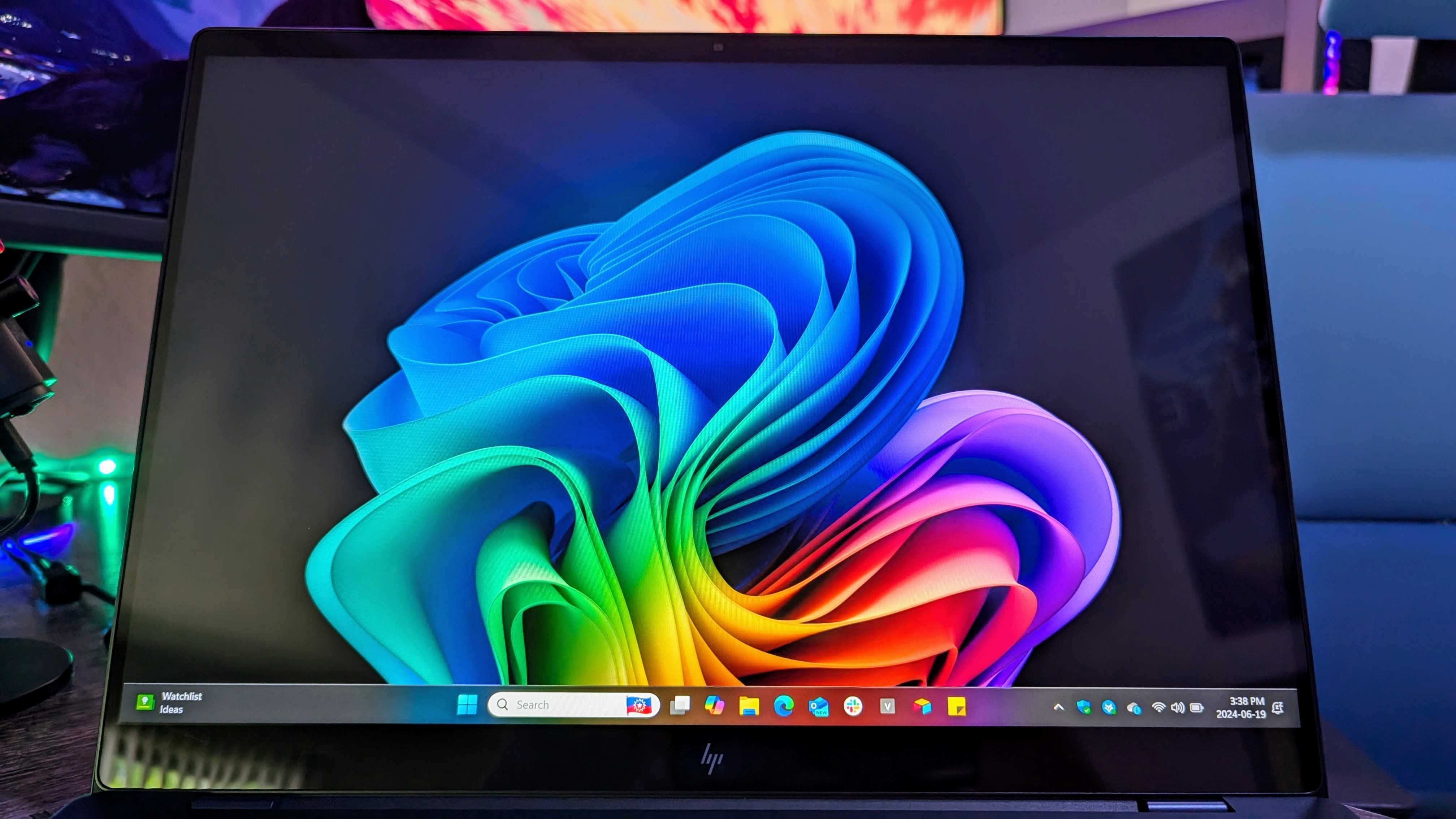
Display highlights
- The EliteBook Ultra G1q trades the OLED panels popular with many premium 14-inch Windows laptops for a sub-QHD WLED display.
- It's not the brightest or sharpest display and is limited to 60Hz, but the overall image quality seems high.
- This is a very comfortable display to view, and at first glance, color accuracy seems solid.
The EliteBook Ultra G1q's display is probably the most boring part of the entire laptop. It's not a bad panel, per se, but it's definitely less interesting than what we've seen on other premium 14-inch Ultrabooks. There's no OLED or Mini LED tech here — instead, HP opted for its White LED panel tech, which basically means a focus on viewing comfort and power efficiency over vibrancy, brightness, or responsiveness.
That translates to a 60Hz refresh rate and a maximum brightness of around 300 nits. That's fine for most business users who don't need a top-notch display, but I do already miss the pure image quality of an OLED panel and the brightness of modern IPS LCD displays. What I can say about this display is that it is very comfortable to look at, in a similar vein to how I felt about the HP ZBook Firefly 14 (G10). Colors are soft and neutral without appearing washed out or grainy, and white balance (at least at first glance) seems consistent across brightness levels.
You'll have to wait until I can fully test this display and put it through its paces, but my initial impressions are that it's sharp enough at sub-QHD (1400p) and feels good to use, even if it's not terribly exciting. One thing I can say now, though, is that the anti-glare coating on this display doesn't seem to do a very good job of actually combatting glare and reflections.
HP EliteBook Ultra G1q: Performance
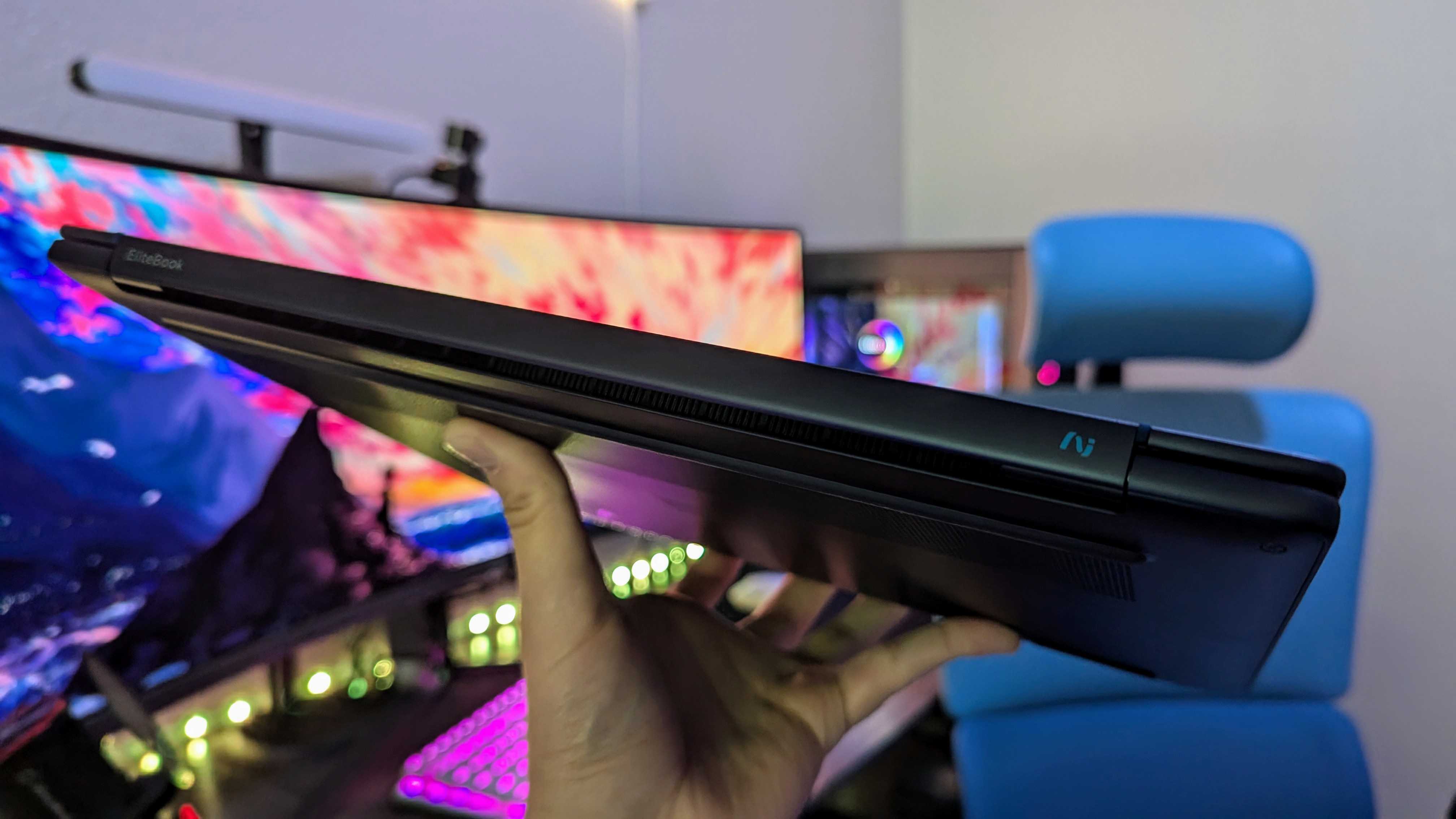
Performance highlights
- The EliteBook Ultra G1q is fast and responsive in everything I've thrown at it, and feels very performant for real-world usage.
- Performance does seem to decrease (alongside max display brightness, oddly) when unplugged, but not enough to deteriorate the experience.
- Overall, Snapdragon X seems to be delivering on its promises, although we'll have to wait for our full review for all the in-depth benchmarks and tests.
The top issue with past generations of Windows on ARM devices has famously been performance, but Qualcomm promised to make that concern one of the past with the Snapdragon X series. We're still running our in-depth tests and benchmarks to see how new laptops like the HP EliteBook Ultra G1q run, but my early impressions are very positive. This laptop is more responsive and performant than any other Windows on ARM machine I've used... Even if, admittedly, that's not a very high bar to cross.
When it comes to booting up, waking from sleep, logging in with Windows Hello, opening a mixture of x86, ARM64, and web-based apps, and managing various browser tabs, the EliteBook Ultra G1q feels just as fast as any of the recent thin-and-light Intel Core Ultra laptops I've tested. That's a substantial and much-needed leap in performance over past Windows on ARM devices, and it means the EliteBook Ultra G1q immediately feels completely useable for most people.
The Snapdragon X series also means almost non-existent fan noise, as it takes a sizeable load to nudge the fans on at all, and even then, they're very quiet. It's still too early to make a definitive claim on high-end and graphical performance, but what I've seen so far makes me optimistic that the Windows on ARM woes of the past are just that: the past. Battery life is another area that will require more in-depth testing from me, but an entire day of setup, installing updates and programs, and logging into all my accounts still didn't kill this laptop, so things are looking good on that front, too.
HP EliteBook Ultra G1q: Our impression so far
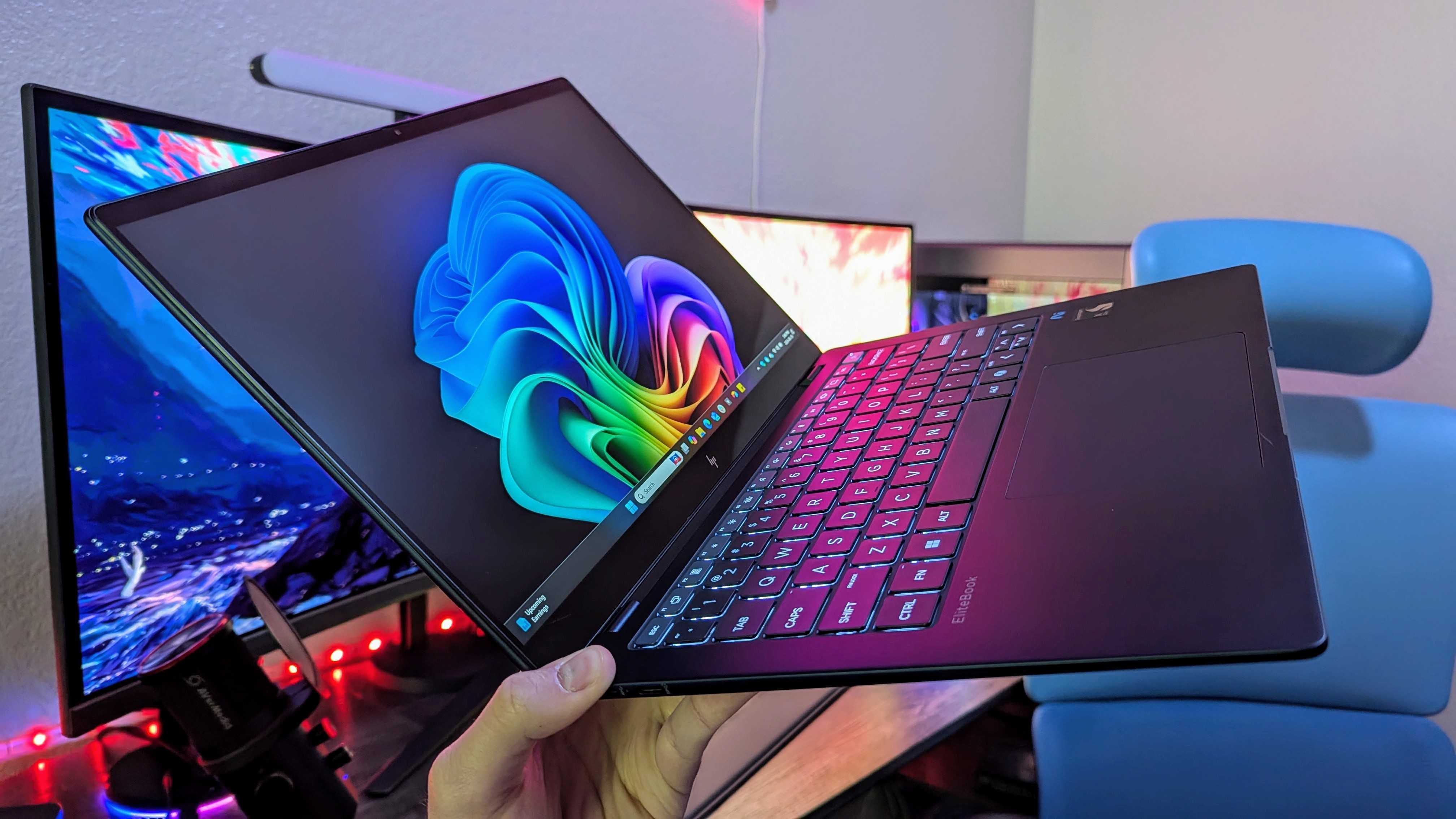
I've been eagerly awaiting the arrival of the Snapdragon X series since the day it was first announced. No, it was never about AI PCs or the addition of Neural Processing Units (NPUs) and all the TOPS they're capable of; I've long believed that ARM is the future of mobile computing, and we're starting to see that now. It's a new wave of Windows laptops with true all-day battery life, thin-and-light designs with quiet and cool thermals, and excellent performance that can handle everything you can throw at them.
The HP EliteBook Ultra G1q is among those first-wave products, and my first impressions of it are very positive after a day or so of using it. I still have some questions about performance and battery life that will require much more testing, and I'm reserving judgment on this display until I've spent more time with it. Still, at least initially, Qualcomm, Microsoft, and Windows OEM partners like HP finally got this right.
The EliteBook Ultra G1q is more expensive than its comparable Copilot+ PCs because of its enterprise-specific features and capabilities. Still, this laptop may be one of the best Windows on ARM PCs for those who need that added peace of mind. For those who want to save money, alternatives like the HP OmniBook X 14 (basically this laptop but for consumers) and even the Surface Laptop 7 look like extraordinary values. I'm excited to dive deeper into what this laptop is capable of and compare it to many other machines in the future, so stay tuned for that.
There's still a lot of testing and evaluating to be done, but initial impressions of the enterprise-focused HP EliteBook Ultra G1q are positive. This hardware is gorgeous and the new Snapdragon X series chips are already impressing, suggesting that the EliteBook Ultra G1q really is heralding a new generation of Windows laptops.







